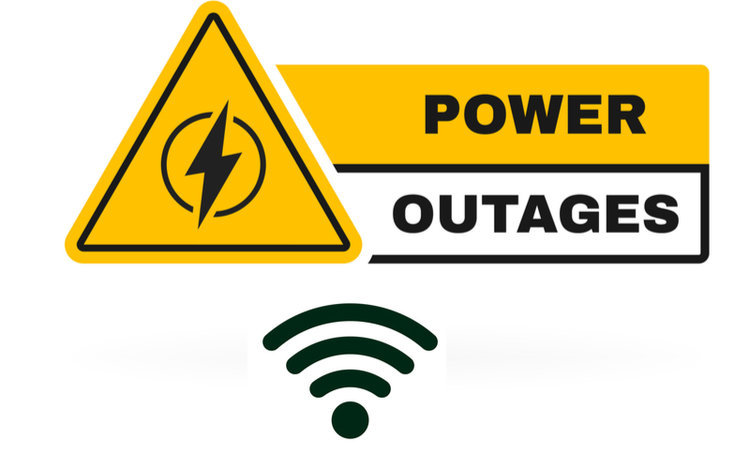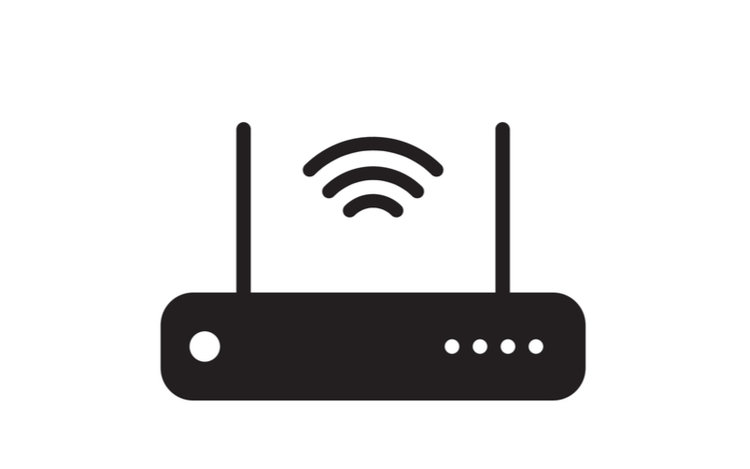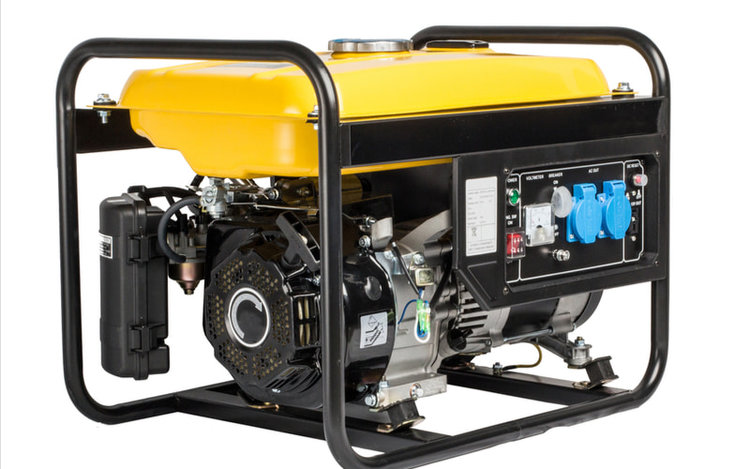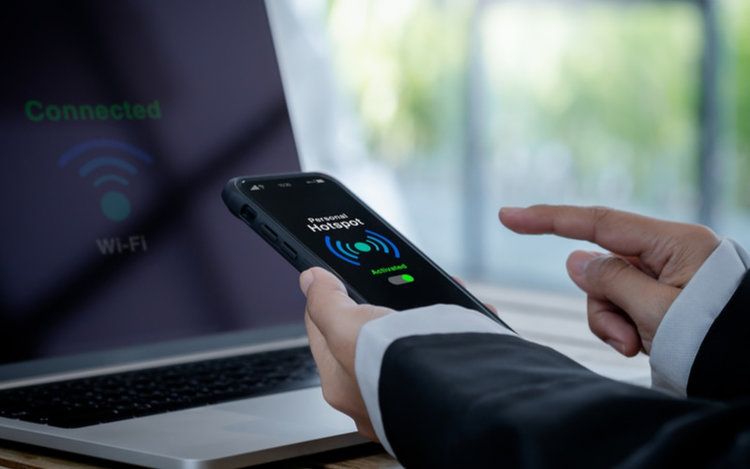Does Wi-Fi Still Work When Electricity’s Out?

What To Know
- Wi-Fi routers need a power source to function, meaning Wi-Fi cannot work without electricity.
- There are various methods to access the internet during a power outage, including backup power sources, and mobile hotspots.
From backup solutions to mesh networks and peer-to-peer connections, this article will guide you through keeping your Wi-Fi up and running against the odds.
Ready to explore? Let’s dive in.
Quick Navigation
Can a Wi-Fi Router/Modem Work Without Electricity?
A Wi-Fi router (or modem) works by receiving internet signals from a wired connection, such as cable, fiber or DSL internet.

These signals are then broadcasted as a wireless signal for devices such as smartphones, laptops, and tablets to connect to. However, for a Wi-Fi router or modem to stay on and function, it must have a source of power.
If there is a power outage or if you unplug the router, your wireless internet network will not be available until power is restored.
Imagine you’re on a deadline to complete a task and the power goes off. What do you do if you need an internet connection?
The good news is that some alternatives to routers and Wi-Fi connections can come in when there’s a power outage.
NOTE: If an outage is serious enough to affect your internet service provider (ISP), there’s little you can do. However, every ISP has their own backup power supply, so such an outage would only affect them temporarily.
How To Get Access To The Internet During an Outage
A power outage can be disruptive, especially if you rely on the internet for work or other important tasks.
In this section, we’ll explore ways to access the internet during a power outage.
Whether you’re dealing with a temporary interruption or a more prolonged outage, there’s something for you. Let’s go!
1. Backup Power
There are several technologies that serve as a backup to power supply. You can use a UPS, generator, or rechargeable power pack.
Power Stations/Portable Chargers
These are portable high-capacity batteries with power outlets and charge indicators. You can use them to power smartphones, Bluetooth speakers, and even larger devices (i.e., laptops, TVs, and small cooling systems).
Like the Roypow Portable Charger , which can provide 12V DC at 5A to power your modem and router at an affordable price.
Or the No products found., power stations are also called mobile generators. They have AC, DC, and USB outlets to support your Wi-Fi router—regardless of its power requirements.
UPS
A UPS (Uninterruptible Power Supply) protects connected devices from power issues like surges and power outages. It stores energy in its battery and can keep your Wi-Fi router going in the event of a power outage.
When the power goes off, the UPS typically lasts from a few minutes to an hour—depending on its battery capacity and your router’s power consumption. If you’re in the market for one, check out the CyberPower SL700U UPS System .
Gasoline Generator (in case you have had one already)

In the US, gasoline generators see many homes, institutions, and facilities through emergencies or periods of an extended power outage caused by extreme inclement weather.
If you’d like a power alternative that lasts longer, gasoline generators are your best bet. They can power your router, modem, and other essential devices in your home or office.
Ensure your generator is in excellent condition, and keep some gas on standby to power the generator when needed.
2. Personal Hotspot
If you have a smartphone with an active internet plan, you can use its hotspot.
First, turn on the data connection and hotspot on your smartphone. Then connect your PC or Smart TV to the Wi-Fi hotspot to stream media.
Please set up password protection for your hotspot. This will allow you to control what devices connect to the hotspot and monitor data consumption.

3. Mobile Broadband Devices
A mobile broadband device is a small device that connects to a cellular network and allows other devices to connect to the internet via Wi-Fi. You can use one in place of an electricity-powered Wi-Fi router.
Examples of mobile broadband devices are the MiFi and data dongle. These devices usually have a battery life of several hours. They can provide internet access to multiple devices in a small area.
A MiFi is a smaller, battery-powered version of a Wi-Fi router. In an outage, you can connect your internet devices to the MiFi’s wireless network and access the internet. Just ensure that the MiFi has a charged battery and an internet plan.
A data dongle doesn’t use batteries or an external power source. You plug it directly into a USB port (on your laptop, TV, or other internet devices), and it draws power from the device it is connected to.
If you’re traveling or camping, MiFi and data dongles are excellent companions. You can recharge your MiFi with a car battery or a Goal Zero Sherpa 100 AC (Previous Generation) Portable Power Bank .
4. DSL or Dial-Up Internet Service
Consider using a DSL (Digital Subscriber Line) or Dial-Up internet service if they are available in your area.
Internet service providers deliver DSL internet signals to a home or office via telephone lines. DSL modems receive the signals from the telephone line and convert them to internet service for your devices.
The main advantage of DSL is that it doesn’t require electricity to transmit signals; you’ll have an internet connection even if a large-scale power outage affects your ISP. However, you’ll still need to power the DSL modem, so keep a power station or generator handy.
DSL internet service is more prevalent in rural areas because it is reliable and affordable. However, some ISPs have discontinued DSL services to focus on other internet types. Check to know if your ISP is among the Best DSL Internet Providers.
The difference between DSL and Dial-Up service is that DSL always gives you internet access (even when you’re using the telephone), but Dial-Up requires you to use either the internet or phone service at a time—not both.
5. Public Wi-Fi Hotspots
If you need to access the internet for a short period, you can look for public Wi-Fi hotspots in your area. You’ll find these in places like malls, restaurants, libraries, and coffee shops.
These public spaces usually have backup power sources (generators), so their WiFi stays up during a power outage.
If you have some work to do, a coffee shop is the most convenient option. You can check or send emails, do research, and upload content.
There are several coffee shop chains that offer free Wi-Fi as a guest benefit. If it’s convenient, walk into any Starbucks or Dunkin’ Donuts; grab a cup of coffee and use the internet while you’re there.
To find more simple ways to connect to the public internet when there’s an outage, take a look at our article: 4 Simple Ways to Get Temporary Internet for Everyone.

FAQs
1. Does Fiber Internet Work During an Outage?
Fiber internet is high-speed internet that uses fiber-optic cables to transmit data. This technology transmits data under the form of light, instead of electricity.
Fiber-optic cables are faster than traditional copper Ethernet cables; they have higher bandwidth capacity and minimal latency.
Like Ethernet networks, fiber internet can work during a power outage. However, this depends on the scale of the power outage and the infrastructure of the fiber network.
If the power outage results from a widespread problem (i.e., natural disaster), the fiber infrastructure might be damaged, and the internet service will be down until it’s repaired. However, if the network framework is intact and the ISP has a backup power supply, internet service will be available during a power outage.
You can set up a fiber-optic network, but remember that you’ll need to power the routers and modems that you connect to the fiber-optic wall plates.
2. Can You Run a Wi-Fi Router Off a Generator?
Yes, you can run a Wi-Fi router off a generator. Once your router is plugged into an electricity source, it will work just fine.
However, there are a few things to consider when using a generator.
You can use a generator to power your router, but ensure that you connect the router to the generator through a power inverter. The power inverter converts the generator’s DC power to AC, which the router needs to function.
NOTE: If the power on a generator is fluctuating (due to overload), it can cause damage to the router. In this case, use a surge protector or power conditioner.
Conclusion
Wi-Fi routers require a power source to stay on and provide internet access to connected devices. Even your ISP needs electricity to power its servers and transmit internet data.
If you’re caught in a power outage or are traveling, you can access the internet through public hotspots, mobile phone hotspots, or MiFi devices. You can also keep your home router running with backup power sources.
While a power outage can be inconvenient, it doesn’t have to keep you out of your favorite online spaces.
Gabriella ‘Diogo is a technical writer with a vested interest in tech hardware and equipment. She shares her knowledge and processes in an easy-to-grasp, lighthearted style. When she’s not testing or researching device performance, you’ll find her writing short stories or rewatching episodes of her favorite sitcoms.

